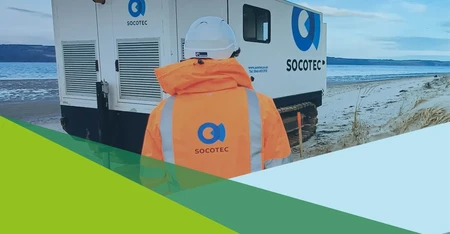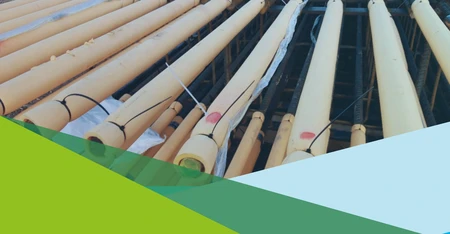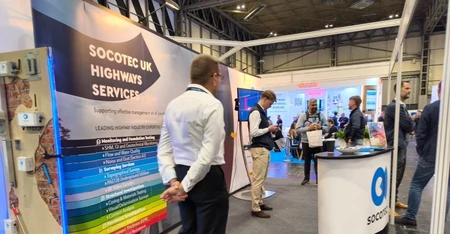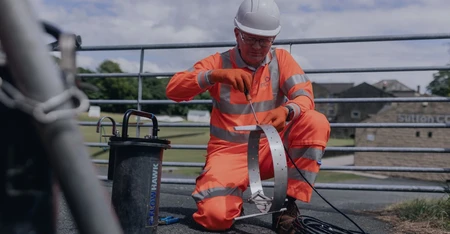Article written by

1 /
Explore the differences between Thermal Integrity Profiling and Crosshole Sonic Logging for concrete foundation testing.



Casting in-place deep foundations often have inherent uncertainties -particularly when excavated and concrete-filled under wet or slurry construction techniques.
Current designs tend to utilise higher foundation loads, fewer elementsand optimised lengths, which means each deep foundation element mustsatisfy load support and performance requirements over its intendedservice life.
Let SOCOTEC UK and Ireland’s Business Unit Director for Foundation Testing, Martyn Ellis explain the key attributes of Thermal Integrity Profiling and Crosshole Sonic Logging when it comes to Concrete Foundation Testing…
Essentially, Thermal Integrity Profiling is the attaching of thermal wire cables onto a foundation's reinforcing cage prior to insertion into the foundation excavation. Each thermal wire has a thermal sensor every 300mm along its embedded length.
These wires provide temperature versus depth profiles that can be used to
assess:
For appropriate use and result interpretation with the TIP method, concrete mixes should have a temperature differential of at least 10°C between placement and peak temperature. For diaphragm wall panels, thermal wires are attached with wire pairs on opposite perimeter faces, with maximum distance between perimeter wire locations typically limited to 1,000 mm. Thermal wires in circular and rectangular elements are usually placed in diametrically or exterior opposite pairs to assess reinforcing cage shifting and concrete cover. When long reinforcing cages are constructed in sections, thermal wires are attached to each section and then quickly spliced.
Crosshole Sonic Logging is also used to evaluate the integrity of cast-in-place bored piles and diaphragm walls. Steel access tubes are recommended in order to minimise debonding with the subsequently placed concrete.
The tubes are fixed to the reinforcing cage prior to insertion into the excavation, with a tube every 300mm of diameter and in wall panels, ideally every 1,000mm but no more than 1,500mm.
The tubes are capped at the top and bottom to prevent debris inflow and must be filled with water to minimise debonding between tubes and concrete. Testing is typically performed between 7 to 14 days after casting. Ultrasonic probes are lowered to the bottom of each pair of tubes and then pulled from the bottom up.
CHSL signals are stacked horizontally providing plots of the first arrival time (FAT) and signal energy versus depth profile, as well as a waterfall plot noting first arrival time and signal strength. This data is used to assess zones with weak concrete or soil inclusions.


Too often, specifications are copy and pasted into scenarios from previous projects without precise thought or knowledge as to why the right type of testing is vital, and, ultimately, what information is needed from the results.
SOCOTEC’s experts are well versed with both TIP and CHSL, and are on-hand to understand your needs and provide a bespoke solution. The ultimate goal should be to obtain a thorough and meaningful set of results/data to assess quality, serviceability, and longevity of the foundation unit.
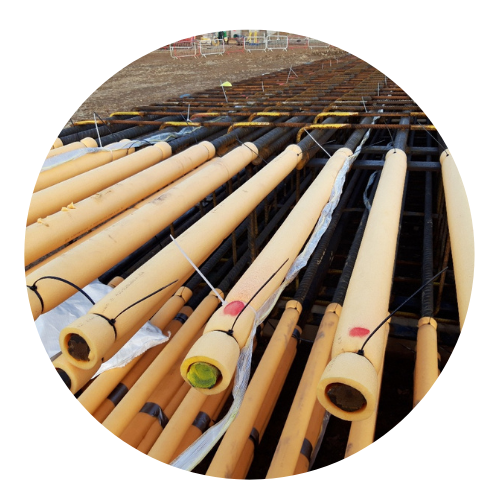
Too often, specifications are copy and pasted into scenarios from previous projects without precise thought or knowledge as to why the right type of testing is vital, and, ultimately, what information is needed from the results.
SOCOTEC’s experts are well versed with both TIP and CHSL, and are on-hand to understand your needs and provide a bespoke solution. The ultimate goal should be to obtain a thorough and meaningful set of results/data to assess quality, serviceability, and longevity of the foundation unit.

